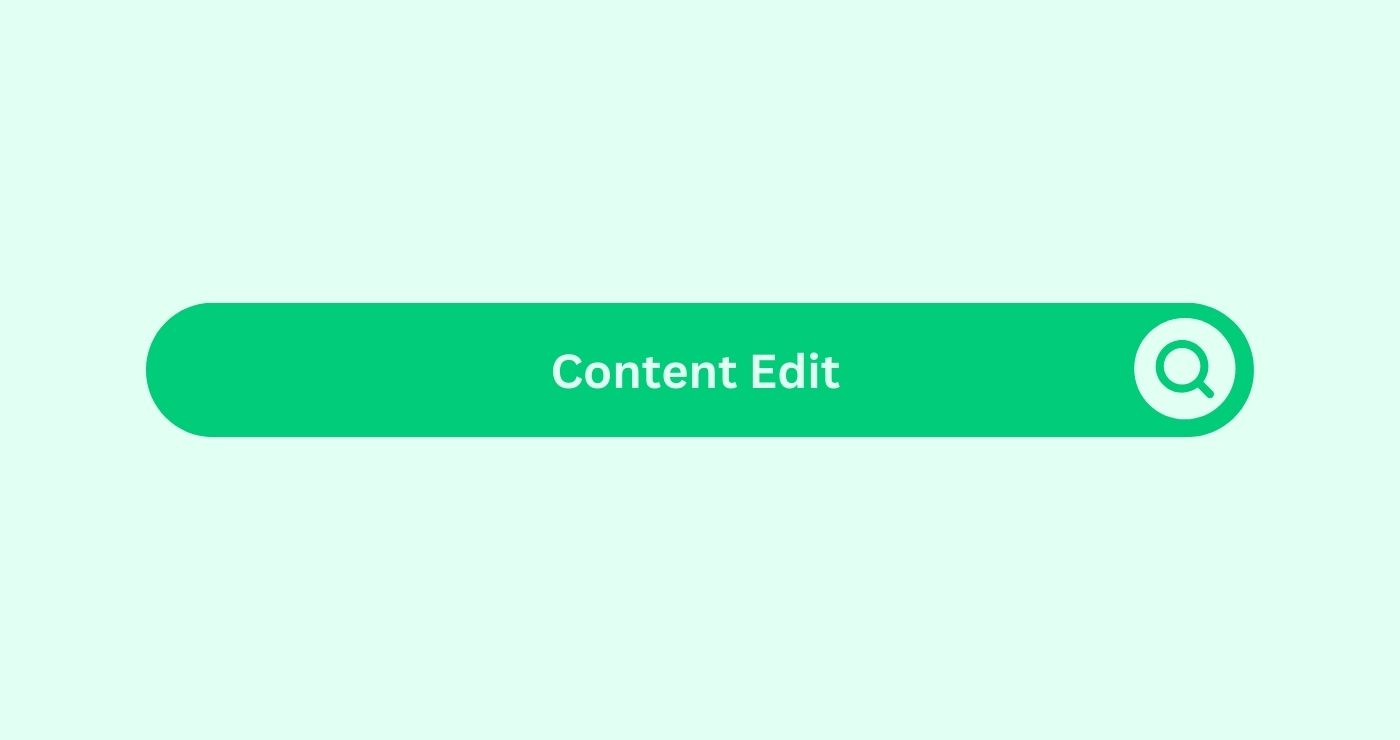Definition
Content editing improves quality, SEO, and engagementDefinition Engagement in content marketing refers to the deg... by updating, correcting, and making content clearer, more relevant, and readable, benefiting businesses by enhancing SEO, quality, and user experience.
How You Can Use
Consider managing an e-commerce website with a blog section that provides tips and guides on using your products. You notice that some blog posts are not performing well in search engine rankings and have high bounce rates. Here’s how you can use Content Edit to address these issues:
- Identify Content Issues: Use analyticsDefinition In SEO, analytics involves collecting, measuring,... tools to identify blog posts with low engagementDefinition Engagement in content marketing refers to the deg... metricsWhat are Metrics in the context of SEO? Metrics in SEO refer....
- Optimise KeywordsDefinition Keywords are crucial for SEO success as they conn...: Optimise blog posts for relevant and updated keywordsDefinition Keywords are crucial for SEO success as they conn.... Replace any outdated keywordsDefinition Keywords are crucial for SEO success as they conn... and integrate new ones naturally within the content.
- Enhance Readability: Use bullet points, subheadings, and visuals for easier understanding.
- Update Information: Ensure all facts, statistics, and references are current and accurate. Replace outdated information with the latest data and insights.
- Improve EngagementDefinition Engagement in content marketing refers to the deg...: Enhance engagementDefinition Engagement in content marketing refers to the deg... with calls-to-action, links, and interactive elements to prompt further exploration of your site.
Revamp blog posts to boost site SEO and user experience.
Formulas and Calculation Methods
In the process of content editing, various metricsWhat are Metrics in the context of SEO? Metrics in SEO refer... and formulas can be used to measure improvement and performance:
- Keyword DensityDefinition Keyword density refers to the percentage of times...: To find the percentage of a keyword, divide its frequencyDefinition Frequency in Social Media Marketing refers to the... by the total words and multiply by 100.
Keyword Density (%)=(Number of Keyword Occurrences/Total Word Count)×100
Keyword Density (%)=(Total Word Count/Number of Keyword Occurrences)×100 - Readability Score: Tools like the Flesch-Kincaid readability test can be used to determine how easy your content is to read.
- EngagementDefinition Engagement in content marketing refers to the deg... MetricsWhat are Metrics in the context of SEO? Metrics in SEO refer...: Monitor session duration, bounce rateDefinition Bounce Rate in social media marketing refers to t..., and pages per sessionDefinition Pages Per Session (PPS) is a crucial metric in SE... to assess edit impact.
Key Takeaways
- Regular Updates: Continuously editing and updating content ensures it remains relevant and valuable to your audienceDefinition The term "Audience" refers to the group of indivi....
- Keyword Optimisation: Regularly updating keywordsDefinition Keywords are crucial for SEO success as they conn... helps in maintaining and improving search engine rankings.
- User Experience: Improving readability and engagementDefinition Engagement in content marketing refers to the deg... can significantly enhance user experience and decrease bounce rates.
- Accuracy and RelevanceDefinition In SEO, relevance refers to the degree to which a...: Keeping information accurate and up-to-date builds trust and authority with your audienceDefinition The term "Audience" refers to the group of indivi....
- SEO Best Practices: Following SEO guidelines ensures better visibility and ranking in search engine results.
FAQs
What is Content Edit?
Content Edit is the process of refining and enhancing existing content to improve its quality, relevanceDefinition In SEO, relevance refers to the degree to which a..., readability, and SEO performance.
Why is Content Edit important for SEO?
Content Edit is crucial for SEO as it helps improve search engine rankings, drive organic trafficDefinition In the context of SEO (Search Engine Optimisation..., and enhance user experience.
How often should Content Edit be conducted?
It's recommended to conduct Content Edit regularly, at least quarterly, to keep the content fresh and relevant.
What tools can be used for Content Edit?
Tools such as Grammarly, Hemingway Editor, Google AnalyticsDefinition In SEO, analytics involves collecting, measuring,..., SEMrush, and Yoast SEO are commonly used for conducting Content Edits.
How does Content Edit improve user experience?
By optimizing readability, engagementDefinition Engagement in content marketing refers to the deg..., and relevanceDefinition In SEO, relevance refers to the degree to which a..., Content Edit ensures content is valuable and accessible to users.
What metrics are important in a Content Edit?
Key metricsWhat are Metrics in the context of SEO? Metrics in SEO refer... include keyword densityDefinition Keyword density refers to the percentage of times..., readability score, bounce rateDefinition Bounce Rate in social media marketing refers to t..., average session duration, and engagement rateDefinition The engagement rate in social media marketing mea....
Can outdated content negatively affect SEO?
Yes, outdated content can lower search engine rankings and decrease user trust and engagementDefinition Engagement in content marketing refers to the deg....
How can you identify content that needs an edit?
Using analyticsDefinition In SEO, analytics involves collecting, measuring,... tools to identify pages with high bounce rates, low session durations, and poor keyword performance can help pinpoint content in need of editing.
What is keyword density and why does it matter?
Keyword densityDefinition Keyword density refers to the percentage of times... is the percentage of times a keyword appears in the content. It matters because it helps search engines understand the content’s relevanceDefinition In SEO, relevance refers to the degree to which a... to specific searches.
How can Content Edit affect conversion rates?
By improving the quality and relevanceDefinition In SEO, relevance refers to the degree to which a... of content, Content Edit can increase user engagementDefinition Engagement in content marketing refers to the deg... and conversionDefinition In the realm of SEO, Conversion refers to the pro... rates.




